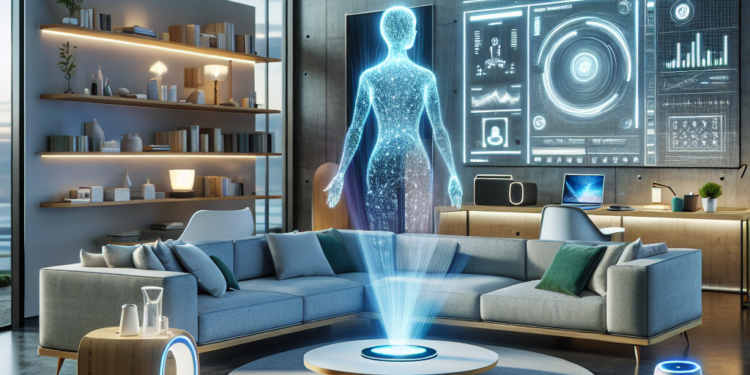In recent years, artificial intelligence has made significant advancements in various industries, including home automation. One of the most popular applications of AI in homes is the use of personal assistants. These AI-driven personal assistants are designed to make everyday tasks easier and more convenient, by providing users with information, reminders, and even controlling smart home devices.
AI-driven personal assistants come in various forms, such as smart speakers like Amazon Alexa and Google Home, as well as virtual assistants like Apple’s Siri and Microsoft’s Cortana. These devices utilize natural language processing and machine learning algorithms to understand and respond to user commands.
One of the main benefits of AI-driven personal assistants is the convenience they offer. Users can ask these devices to perform tasks like setting reminders, playing music, or answering questions, without having to manually input commands. This hands-free operation is especially useful for busy individuals who may not have time to type or navigate through menus on their devices.
Another advantage of AI-driven personal assistants is their ability to learn and adapt to user preferences over time. These devices continuously analyze user interactions and tailor their responses based on past behavior. For example, if a user frequently asks for the weather forecast in the morning, the personal assistant may proactively provide this information without being prompted.
AI-driven personal assistants also have the ability to connect to other smart home devices, allowing users to control lights, thermostats, and security cameras with voice commands. This integration creates a seamless and efficient home automation experience, where users can easily manage their household tasks without lifting a finger.
Security and privacy are important considerations when using AI-driven personal assistants in the home. Manufacturers implement various security measures, such as data encryption and user authentication, to protect sensitive information. Additionally, users can adjust privacy settings to limit the amount of data collected by these devices.
Despite the numerous benefits of AI-driven personal assistants, there are still some drawbacks to consider. One common concern is the potential for these devices to misinterpret commands or provide incorrect information. While AI technology continues to improve, there is still room for error, especially in complex or ambiguous scenarios.
Another drawback of AI-driven personal assistants is their reliance on an internet connection. Without a stable internet connection, these devices may not be able to perform certain functions, limiting their usefulness during outages or network disruptions.
In terms of cost, AI-driven personal assistants can range in price depending on the brand and features. While some devices are relatively affordable, others may come with a higher price tag, especially for premium models with advanced capabilities.
Overall, AI-driven personal assistants have the potential to revolutionize the way we interact with our homes. These devices offer a convenient and intuitive way to manage everyday tasks, control smart home devices, and stay organized. As AI technology continues to advance, we can expect to see even more innovative features and functionalities in the future.
As with any technology, it is important for users to be aware of potential risks and take precautions to safeguard their privacy and security. By understanding how AI-driven personal assistants work and utilizing best practices for safe usage, users can fully enjoy the benefits of these innovative devices in their homes.













